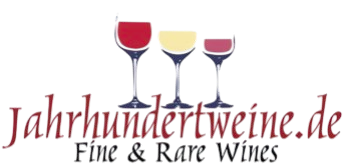Charles De Squeyre - Armagnac 1938 40% alc. by vol. 70cl with wooden box
€595.00*
1 Available immediately
Single bottle 0.7l
Product information
Specialist report: Charles De Squeyre Armagnac 1938
A forgotten treasure from the pre-war era of Gascony
Charles De Squeyre Armagnac 1938 represents an almost lost generation of Armagnacs - distilled on the eve of the Second World War and only preserved by fortunate circumstances. As a vintage Armagnac(Millésimé) from the heart of the Bas-Armagnac, it is an extreme rarity whose sensory profile embodies the essence of many years of barrel ageing under perfect conditions.
1. historical context & origin
Era:Distilled during a turbulent period (Spanish Civil War, eve of WW2). Many distilleries were destroyed or abandoned. Preserved casks from this period are exceptions.
Charles De Squeyre: Not a domain, but a trademark (often with négociants). The exact distillery is often unknown, but the brandy typically comes from smaller, traditional Bas-Armagnac distilleries. The name indicates quality selection.
Terroir: Bas-Armagnac (sandy soils) - known for elegant, fruity but complex Armagnac with a fine minerality.
2. production & ageing
Grape varieties: Probably classic blend of Ugni Blanc (freshness, acidity), Baco 22A (structure, depth, typical of old Armagnacs) and Folle Blanche (finesse).
Distillation: Traditionally in the Alambic Armagnacais (continuous still), which retains more flavours and gravity than a pot still.
Maturation:
At least 85+ years (as of 2024) exclusively in Gascony oak barrels (fine-pored, low in tannins).
Extremely high"part des Anges" (evaporation loss): Estimated 65-75% of the original volume.
Storage in cool, damp chais slows oxidation, preserves acidity and develops complex tertiary flavours.
3. sensory profile (reconstruction based on comparable 1930s Armagnacs)
Colour: Deep mahogany to almost black, amber reflections on the rim. Extremely viscous, forms very slow, thick "tears".
Nose:
Dominant rancio: walnut, hazelnut, truffle, Maderised wine, old leather, tobacco leaf, damp forest floor notes.
Concentrated dried fruit: prunes, fig confectionery, candied oranges, dates.
Wood & spices: Sandalwood, cedar chest, liquorice root, clove, delicate peppery notes.
Depth & minerality: Undertones of beeswax, old balsamic vinegar, smoke, graphite and damp stones.
Palate:
Texture: velvety-dense, almost syrupy, with perfectly integrated alcohol (hardly any burnt notes).
Flavour: Intense, concentrated aromas: ripe plums, walnut, truffle and leather dominate. Including sandalwood, liquorice, dark chocolate and a smoky, mineral base. Acidity only noticeable as a framework.
Balance: Monumental harmony - power and elegance in symbiotic combination.
Finish: Extremely long (minutes), with echoes of nut, truffle, old wood, liquorice and a hint of caramel.
4. specialities & tasting
Style: Classic, earthy Bas-Armagnac of the pre-war era with intense rancio and mineral depth. Less fruity than modern Armagnacs, but with seismic complexity.
Drinking temperature: 18-20°C (room temperature). No ice!
Glass: Tulip brandy glass (e.g. Cognac Ballon) for flavour concentration.
Tasting: Allow 30+ minutes! Swirl several times, allow to rest in the nose for a long time. Small sips, move around in the mouth for a long time. A spirit for contemplation.
Pairing: Exclusively pure as a meditation drink. Possibly complemented by a mild, fat cigar (e.g. Davidoff Millennium Blend) that does not mask the rancio.
5. market situation & value
Rarity: Extremely high - only single bottles preserved (often from estates). No more regular bottlings.
Price level:
Auctions (Sotheby's, Christie's)
Factors: Fill level (at least "Top Shoulder"), label condition, complete provenance and proof of storage are decisive for value.
Target group: Highly specialised collectors, investors and connoisseurs of historic spirits.
Value drivers: Historical significance, extreme ageing period, almost complete evaporation ("bottle concentrate"), rarity.
6 Critical risk warnings
Provenance is absolutely crucial:poor storage (light, temperature fluctuations) ruins the product. Fill levels below "low shoulder" indicate incorrect storage.
Authenticity risk: High risk of counterfeiting with empty original bottles/labelling. Expertise by recognised experts (e.g. Ullrich/Schweitzer) mandatory!
Sensory risk: Extremely intense rancio and earthy notes can be overwhelming or "faulty" for the inexperienced. Not an Armagnac for beginners!
Cork risk: Natural decay after 85+ years. Professional regrouping (rebottling) often necessary, but reduces value. Check the original seal!
Conclusion
The Charles De Squeyre Armagnac 1938 is a liquid archive piece- a witness to the craftsmanship and terroir expression of Armagnac before the world war. Its sensory depth, supported by monumental rancioand mineral power, is only possible through decades in perfect chais. For connoisseurs, it represents one of the ultimate experiences of old spirits; for collectors, it is an extremely valuable (but risky) investment. Each existing bottle is a museum exhibit to be opened, whose value lies in perfect storage and documented history. Enjoying this Armagnac is not drinking, but an archaeological act of time.

|
Alcohol: | 40 |
|---|---|---|

|
Colour: | amber |

|
Country: | France |

|
Filling quantity: | 750 ml |

|
Flavour: | dry |

|
Grape variety: | Ugni Blanc, Baco Blanc, Colombard, Folle Blanche |

|
Product type: | Spirits |

|
Region: | Armagnac |

|
Type of wine: | Armagnac |

|
Vintage: | 1938 |

|
Producer: | De Squeyre Charles |
Log in
Allergens: Sulphites
Bottler: Producer











